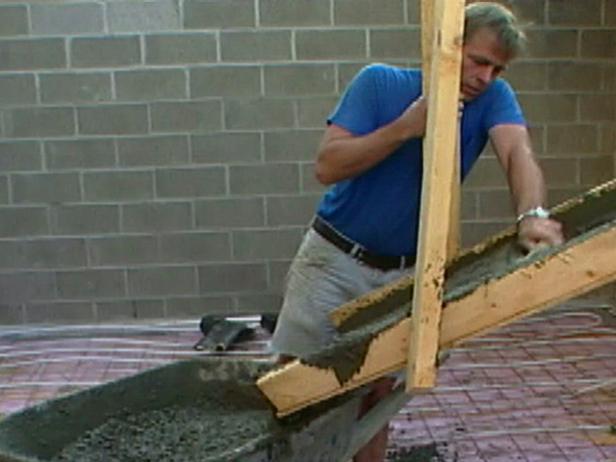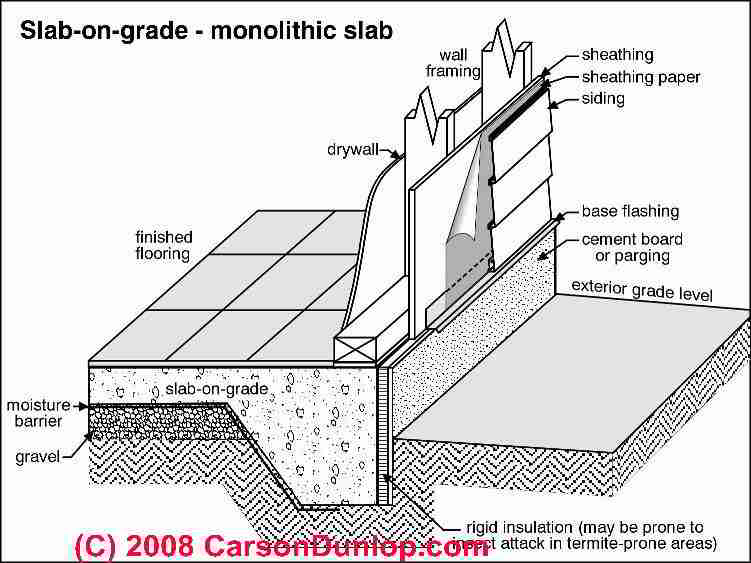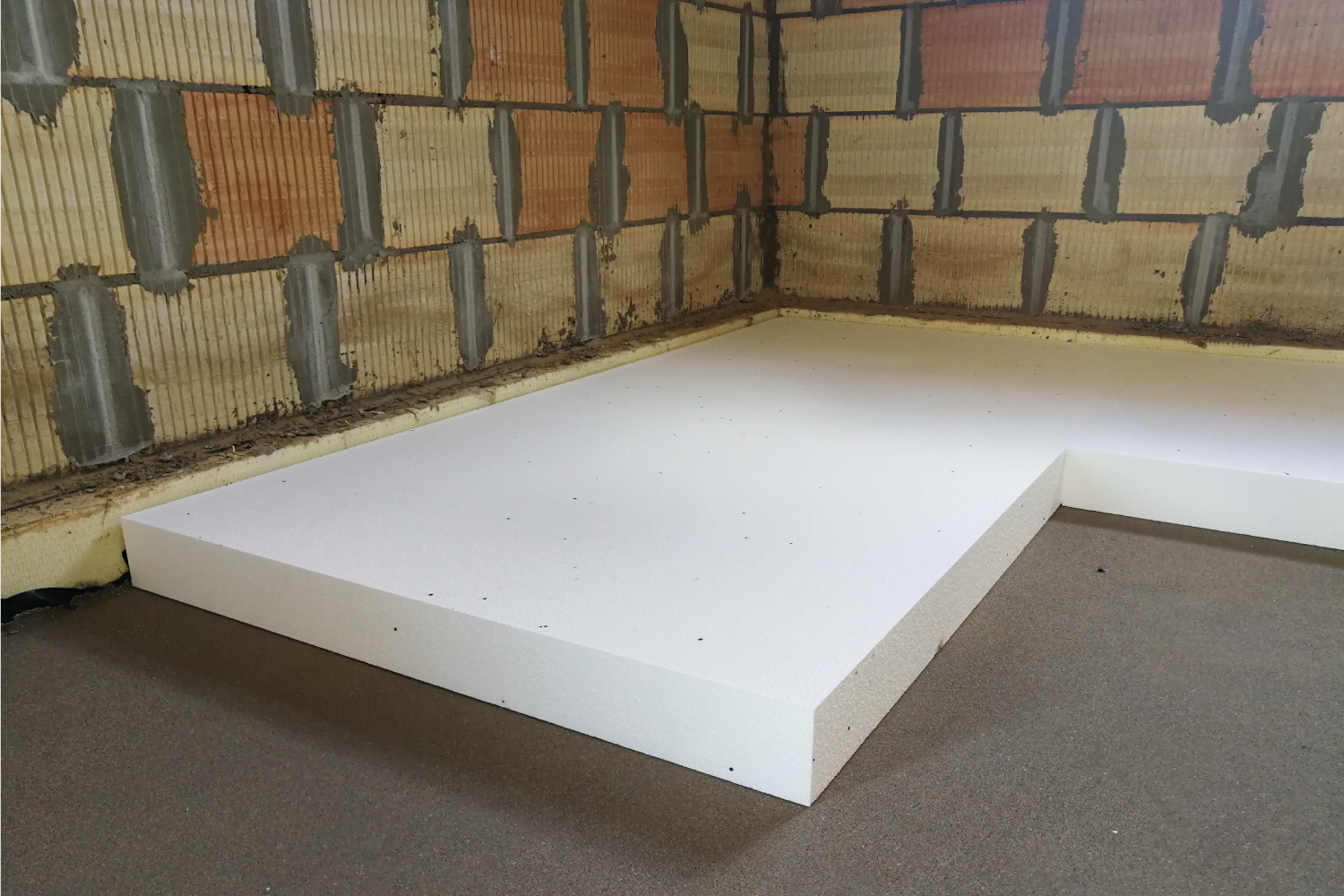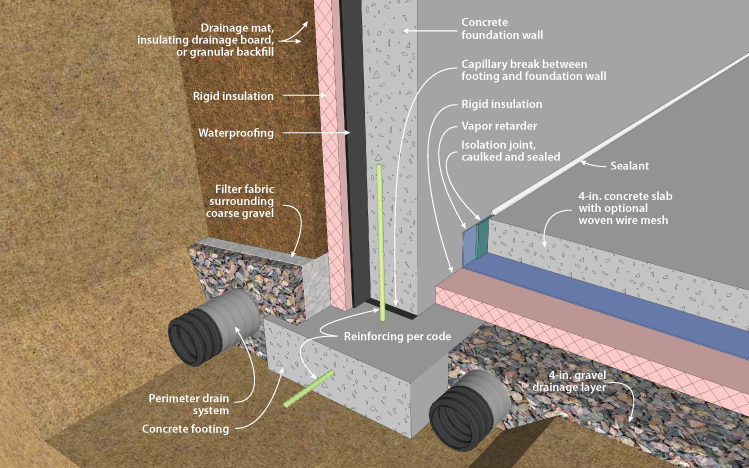The Benefits of Insulating Your Concrete Basement Floor
Insulating your concrete basement floor can bring numerous advantages to your home. Not only does it enhance the overall comfort and livability of your basement, but it also helps save energy and reduce heating costs. Below are the various benefits of insulating your concrete basement floor.
- Improved Thermal Efficiency: Insulating your concrete basement floor significantly improves the thermal efficiency of your home. By creating a barrier between the cold concrete and the living space above, insulation helps to maintain a consistent temperature. This results in a warmer basement in the winter and a cooler one in the summer, making it a more comfortable environment for various activities.
- Energy Savings: Insulating your concrete basement floor can lead to substantial energy savings. By reducing heat loss through the floor, insulation helps to minimize the amount of energy required to heat or cool your home. This translates into lower energy bills and a more sustainable living space.
- Enhanced Soundproofing: Concrete basement floors are notorious for transmitting sound, which can be disruptive to the rest of the house. Insulation acts as a sound barrier, reducing the transfer of noise between floors. This is especially beneficial if you plan to use the basement as a living area, home theater, or office space.
- Moisture Control: Basements are prone to moisture-related issues, such as condensation and dampness. Insulating the concrete floor can help mitigate these problems by creating a vapor barrier. This prevents moisture from seeping through the concrete, reducing the risk of mold and mildew growth and protecting the integrity of your basement.
- Increased Resale Value: A properly insulated basement floor adds value to your home. Potential buyers appreciate the added comfort and energy efficiency that insulation provides. By investing in insulation now, you not only enjoy the benefits while you live in your home but also reap the rewards when it comes time to sell.

Steps to Properly Insulate Your Concrete Basement Floor
Properly insulating your concrete basement floor is crucial to maximize its benefits. We will guide you through the step-by-step process of insulating your basement floor, ensuring a successful and effective installation.
- Clear and Prepare the Space: Start by removing any existing flooring, debris, or moisture from the concrete floor. Sweep or vacuum thoroughly to create a clean and even surface. Repair any cracks or imperfections in the concrete before proceeding.
- Install a Vapor Barrier: Before laying down the insulation, it’s essential to install a vapor barrier to prevent moisture from seeping through. Choose a high-quality polyethylene sheet and carefully lay it over the entire floor, overlapping the seams by at least six inches. Secure the vapor barrier to the walls using a construction-grade adhesive or tape.
- Choose the Right Insulation: When selecting insulation for your basement floor, consider factors such as R-value, moisture resistance, and ease of installation. Common options include foam board insulation, spray foam insulation, or fiberglass batts. Consult with a professional or do thorough research to determine the best insulation material for your specific needs.
- Measure and Cut Insulation Panels: Measure the dimensions of your basement floor and cut insulation panels to fit accordingly. Leave some space around the edges to allow for expansion. Use a utility knife or insulation saw to make precise cuts.
- Lay and Secure the Insulation: Begin laying the insulation panels across the entire floor, ensuring a snug fit between each piece. Secure the panels in place using construction adhesive or insulation tape. Pay extra attention to the seams, making sure they are tightly sealed to minimize heat loss.
- Add a Subfloor and Flooring: To further enhance the insulation and create a comfortable walking surface, consider adding a subfloor on top of the insulation. Options include plywood, oriented strand board (OSB), or interlocking subfloor tiles. Finish by installing your desired flooring material, such as carpet, laminate, or vinyl.
Choosing the Right Insulation Material for Your Basement Floor
Choosing the right insulation material for your basement floor is essential to ensure optimal performance and long-lasting results. Below are different types of insulation materials that help you make an informed decision based on your specific needs and budget.
Foam Board Insulation: Foam board insulation, also known as rigid foam insulation, is a popular choice for insulating basement floors. It offers high R-values, excellent moisture resistance, and easy installation. Foam boards can be cut to size and laid directly on the concrete floor, providing a continuous insulation layer. They are available in different thicknesses and can be secured in place using adhesive or mechanical fasteners.
Spray Foam Insulation: Spray foam insulation is another effective option for insulating basement floors. It consists of a mixture of chemicals that expand and harden, creating a seamless insulation layer. Spray foam insulation has excellent thermal performance, fills gaps and cracks, and provides an air-tight seal. However, professional installation is recommended as it requires specialized equipment and expertise.
Fiberglass Batt Insulation: Fiberglass batt insulation is a cost-effective and widely available option for insulating basement floors. It comes in pre-cut panels or rolls and is made of glass fibers. Fiberglass batts are easy to install and provide good thermal performance. However, they are not as effective in moisture-prone areas unless paired with a vapor barrier. Proper installation is crucial to avoid gaps and ensure optimal performance.
Radiant Floor Heating: If you’re considering adding radiant floor heating to your basement, it can also serve as insulation. Radiant floor heating systems circulate hot water or electrical elements under the floor, providing warmth from below. This eliminates the need for additional insulation materials, as the heating system itself acts as insulation. Radiant floor heating is energy-efficient, provides uniform heating, and adds a luxurious touch to your basement.
Considerations and Professional Advice: When choosing the right insulation material for your basement floor, consider factors such as the climate in your area, moisture levels, budget, and personal preferences. It’s recommended to consult with a professional insulation contractor who can assess your specific requirements and provide expert advice on the most suitable insulation material for your basement.
Tips for Installing Insulation on a Concrete Basement Floor
Installing insulation on a concrete basement floor requires careful planning and execution to ensure maximum effectiveness. We will provide some valuable tips to help you achieve a successful installation and enjoy the full benefits of a well-insulated basement.
Prepare the Surface: Before installing insulation, it’s crucial to prepare the concrete floor properly. Remove any debris, moisture, or existing flooring and clean the surface thoroughly. Repair cracks or imperfections in the concrete using a suitable patching compound or filler.
Address Moisture Issues: Concrete basement floors are prone to moisture-related problems, such as condensation or water seepage. Before installing insulation, it’s essential to address these issues. Ensure proper drainage and consider applying a waterproofing or moisture barrier coating on the concrete floor to prevent moisture from seeping through.
Use a Vapor Barrier: Installing a vapor barrier is essential to prevent moisture from reaching the insulation and causing damage. Lay a high-quality polyethylene sheet over the entire concrete floor, overlapping the seams by at least six inches. Secure the vapor barrier to the walls using adhesive or tape, ensuring a tight seal.
Seal Gaps and Cracks: To maximize the insulation’s effectiveness, seal any gaps or cracks in the concrete floor. Use a suitable sealant or caulk to fill these openings, preventing air leakage and heat loss. Pay close attention to areas around pipes, utility penetrations, and floor/wall junctions.
Consider Insulating the Walls: While the focus is on insulating the concrete floor, it’s worth considering insulating the basement walls as well. Insulating the walls helps to create a more energy-efficient and comfortable space. Insulation materials such as foam board or spray foam can be used for insulating the walls, providing additional thermal and moisture control.
Ensure Proper Installation: Follow the manufacturer’s instructions and recommendations for installing the chosen insulation material. Use appropriate adhesives, fasteners, or tapes to secure the insulation in place. Ensure a tight fit between insulation panels and seal all joints and seams to minimize heat loss and air infiltration.
Common Mistakes to Avoid When Insulating Your Concrete Basement Floor
Insulating a concrete basement floor is a vital step to enhance comfort and energy efficiency. However, certain mistakes can compromise the effectiveness of the insulation. We will highlight common mistakes to avoid when insulating your concrete basement floor.
Neglecting Moisture Control: Moisture control is crucial in a basement environment. Failing to address moisture issues before installing insulation can lead to mold, mildew, and damage to the insulation material. Ensure proper drainage, fix any leaks, and apply a moisture barrier or waterproofing coating on the concrete floor before insulating.
Skipping the Vapor Barrier: A vapor barrier is necessary to prevent moisture from reaching the insulation. Skipping this step can lead to condensation and moisture damage. Install a high-quality polyethylene vapor barrier, ensuring complete coverage and proper sealing around the edges and seams.
Using Inadequate Insulation: Using insulation with insufficient R-value or inappropriate material can result in poor thermal performance. Research and consult with experts to determine the appropriate insulation material and R-value for your specific climate and requirements. Improper insulation can lead to uncomfortable temperatures and higher energy bills.
Inadequate Insulation Coverage: Proper coverage and installation of insulation are crucial for optimal performance. Leaving gaps, not sealing joints properly, or using insufficient insulation thickness can result in heat loss and reduced effectiveness. Ensure a tight fit between insulation panels and seal all joints and seams adequately.
Overlooking Air Leakage: Air leakage can undermine the insulation’s effectiveness and lead to drafts and energy loss. Seal gaps, cracks, and openings in the concrete floor before installing insulation. Pay attention to areas around pipes, utility penetrations, and floor/wall junctions. Properly sealing these areas will minimize air infiltration and enhance energy efficiency.
Poor Installation Techniques: Improper installation techniques can also compromise the insulation’s effectiveness. Follow the manufacturer’s instructions and recommendations for the chosen insulation material. Use appropriate adhesives, fasteners, or tapes to secure the insulation in place. Avoid shortcuts and ensure a proper installation to maximize insulation performance.
Basement Floor Slab Insulation Advice
Photo Tutorial: Insulating Basement Floor with PlastiSpan
How Thick Should Concrete Floor Insulation Be? – HVACseer.com
Insulated Basement Slab Green Edmonton
DOE Building Foundations Section 2-2
Related Posts:








